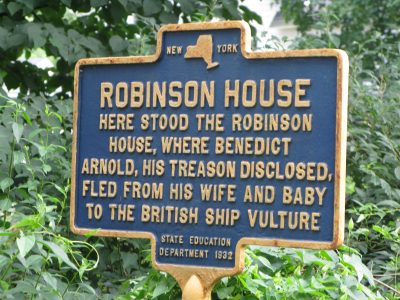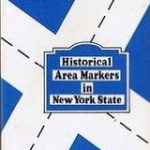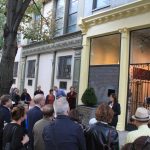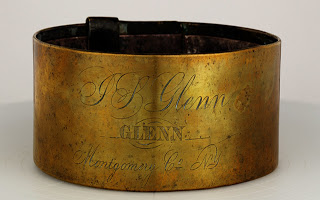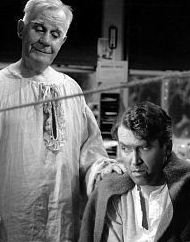
If a tree falls in the woods and no one sees it, has anything happened? If an historical society does something and no other history society knows about it, has anything happened? I am not referring to the lectures, tours, and exhibits which history museums and societies routinely do. Instead I am referring to something a little out of the ordinary, the kind of item one might present at an APHNYS or MANY conference.
The dissemination of ideas is difficult. There is no easy way to accomplish the task. Certainly notices can be published and distributed. The reality is many municipal historians are not members of APHNYS and APHNYS does not have a way of advising its members of best practices or innovative ideas. The same is true for history organizations and MANY. Even if one does present at the annual conference, only some of the members attend and even fewer attend an individual session because there are concurrent sessions. So there is no easy way to share original ideas or actions that go above and beyond the call.
Since I read New York History Blog, I read about many events in the state including ones I cannot possibly attend. For me to go to upstate for a single lecture, tour, or exhibit is a misuse of my time. However, I do attend various conferences and will be reporting on some of them. Since I distribute my own blog, I also am the recipient of newsletters from history organizations. Sometimes they arrive as enewsletters, sometimes as emails, sometimes as Word or PDF attachments, and sometimes by mail. By no means do these notices cover the state, but they do provide a window into what’s going on out there. In this post, I would like to share some items that I consider to be a bit unusual and worthy of attention. This is not a scientific survey nor is it comprehensive. It’s just some excerpts from the random notices I have come across.
Greece Historical Society
The annual report for 2016 of the society states:
The all volunteer Society’s purpose is to collect, preserve, research and share local history with the community. We strive to provide the community with an awareness of the past, an appreciation of the present, and a vision for the future, giving a sense of “roots” and a greater feeling of belonging.
Clearly this society operates under the Tonko vision of local history and not the Cuomo one. I suspect pretty much every local society has in its mission statement and/or annual report something similar to what the Greece Historical Society has. If that’s the mission, then shouldn’t tax dollars be aimed at helping it fulfill that mission rather than to call for the Greece Historical Society to become a tourist destination site for busloads of Chinese?
The Society reports that it held eight monthly Tuesday evening lectures featuring local historians, authors, and humanities scholars in 2016 averaging 85 guests per evening. While no individual lecture deserves mention in this post the cumulative effect of lecture programs does. These numbers mean a total of 680 people participated in the lecture programs of this one society. What would the state-wide total be? Does anyone have any idea how many residents and visitors from nearby communities both individually and through repeat attendance are connecting to local history through lecture programs? I recall one dark and cold February night attending a lecture at the Mabee Farm location of the Schenectady Historical Society where I could just barely find a parking space since well over 100 people were there (I was on my to a conference starting the next day so I was able to attend. I did not drive from Westchester just for it!). Did I mention it was a dark cold night in February? With snow on the ground? At a site not on a main well-lit road but on a narrow dark one? It’s not quite, if you offer it they will come, but overall I would say there is little appreciation or even awareness for the numbers of people who collectively attend lectures through their local history societies. Remember the Lyceums? There still are buildings with that name in many communities. Remember Chautauqua and the circuit Chautauquas that barnstormed the country like baseball teams and circuses use to do. Not everyone is trapped by their electronic devices. Sometimes people like to be with other people in a social and intellectually stimulating setting that reaffirms community identity.
Lock 52 Historical Society of Port Byron
In response to the post New Approaches for Historical Societies and History Museums by Bruce Dearstyne on March 21, 2017 for New York History Blog, Mike Riley, the president of the Lock 52 Historical Society of Port Byron, expressed the concerns of history societies throughout the state. He specifically referred to suggestions made in the post about what history societies can do.
(T)here is the realization that with 8 volunteers who average in age of 75 to 90, it is unlikely that any (of the suggestions in the post) will be adopted. We are in a slow death spiral to the day when we close the doors for good. We can look back and say that all these good folks started helping the society when they were in their 30’s to 50’s, and they remain as the foundation for anything we do. There are no new 30, 40 or 50 year old’s taking their place. And as the folks age and pass, the open hours get cut, or the displays don’t get changed. It becomes a fight for life, attracting visitors almost becomes secondary, which of course harms us greatly, I really don’t know if there is an answer. As a society we just don’t value these civic engagement activities as we use to. I know I am not alone. I am in a race to digitize photos and get them out there on the web so at least if the Society closes, some of the history will be saved and available to people.
Clearly Riley belongs to the Tonko side of the vision of local history as an essential component of the social fabric on the community. Clearly also that fabric is fraying. There is a need to rethink the standard history society model especially as it relates to the large number of small municipalities throughout the state. It is time for some new thinking about the position of the municipal historian, the municipal history society, the local library, and teacher training and the school curriculum and their intertwining. Here is where the history community really needs leadership from the Regents and the Commissioner of Education.
Putnam County Historian (technically not a history society)
The historian’s office held a free digital scanning initiative to secure military memories of the past for future generations. Local families with military memorabilia are invited to make appointments through the County Historian’s Office to have old letters, documents, photographs and assorted military memorabilia scanned and recorded on a memory device such as a USB or burned to a disk, free of charge. Being the repository for the memory of a community, doesn’t simply mean waiting around for people to dump things in your lap. It is legal to be proactive. In fact, if the regulations for municipal historians are ever rewritten, I would include a requirement to be proactive. How many people would want the job then?
Warwick Historical Society
Once upon a time back in 2013, a group of 4th graders were digging behind one of the historical houses of the Warwick Historical Society. This time besides the usual bits and pieces of commonplace objects, they struck paydirt, a decorated brick. As the work continued in 2014 with two ‘archaeologists,’ average age 76, unearthed the wall of home of “Rocking Chair Benny Sayre.” Sayre (1865 to 1940), the keeper of Baird’s Tavern across the street. George Knight, one of the excavators also was busy cleaning up his own grounds. One type of item frequently found was small bottles. “Warwick back in the day was higher than a kite,” said Knight. So it seems. These little bottles were considered medicine that, not unlike today’s Oxycontin, turned out to have a serious drawback. “We had a substance abuse problem here over 100 years ago,” said Warwick town historian Richard Hull. “In the 1890s up until World War I, there’d be itinerant merchants who’d come into town to sell elixirs to relieve pain, headaches, relieve depression and so forth. They spiked these concoctions, so that when they sold them people became quite addicted in some cases,” he said. The Women’s Temperance League may have been a response not only to alcohol abuse, but also to these un-talked-of habits. Everyone likes to ogle the opium bottles. They’re scintillating in a way that stone walls just aren’t. That bugs Knight, although he’s good natured about it.
The historic society wasn’t always this go-go-go. “As you can imagine, it was very dry,” said President Mark Kurtz, who stopped by the dig. “There’s become excitement, with the kids that visit.” Every fourth grader in the Warwick school district takes a tour every year, and the middle school just launched a Sustainable Architecture class that will be taking a field trip to the historic society’s properties. “We’re starting a bunch of brand new reach outs to the school district,” he said. “The point is to make this history become important to people, and that’s the time to reach them.” Lisa-Ann Weisbrod, the society’s new director, said, “It’s amazing how much is going on. It’s a historical society. How busy can it be? It’s crazy.”
This report from the society’s website entitled What’s under Warwick highlights several important developments
- the creation of a monthly enewsletter by the Orange County historian Johanna Yuan reporting on the activities in the county, something all county historians should have to do as part of the job.
- the outreach to the schools in a literally hands-on experience – which will not stop at 4th grade as the junior archaeologists track the project through the duration of their k-12 education (and then become members of the historical society as adults)
- the funding issues the Society experienced for support of the dig versus stabilizing a building
- the unusual nature of the Society which owns multiple buildings and is creating the equivalent of an historic district for the residents of the community to experience.
Chalk up another one for the Tonko vision over the Cuomo vision.
White Plains Historical Society
The society compiled a list of 20 streets named after American Revolution figures. I write about the importance of a sense of place as an essential component to the health of the community. One way to foster a connection between residents and their own municipality is to know not simply the name of the streets of the community but the reason for the name of the streets. While the naming of streets after military (and political) heroes might seem obvious, it also is true the residents of communities today don’t know the why streets and buildings have the names they have or why statues were erected (unless Confederate). History societies have the opportunity to engage the public in “Why that name?” Even numerically named streets or tree-named streets are cultural clues to the thinking of the people who named them. The grid in Manhattan is the most famous example but smaller versions exist in many communities. It is not just coincidence that there are a lot Maple, Elm, and Walnut streets either. We can learn about our past by understanding the names that were bequeathed to the organization of space.
As I mentioned at the onset, these examples aren’t meant to be comprehensive or inclusive. Nonetheless they represent a good cross section of the trials and tribulations on the history community at the grass roots level and the exemplary efforts by volunteers. A little help would be nice.



